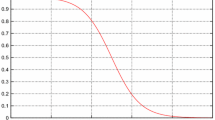Abstract.
We introduce an unsupervised competitive learning rule, called the extended Maximum Entropy learning Rule (eMER), for topographic map formation. Unlike Kohonen's Self-Organizing Map (SOM) algorithm, the presence of a neighborhood function is not a prerequisite for achieving topology-preserving mappings, but instead it is intended: (1) to speed up the learning process and (2) to perform nonparametric regression. We show that, when the neighborhood function vanishes, the neural weigh t density at convergence approaches a linear function of the input density so that the map can be regarded as a nonparametric model of the input density. We apply eMER to density estimation and compare its performance with that of the SOM algorithm and the variable kernel method. Finally, we apply the ‘batch’ version of eMER to nonparametric projection pursuit regression and compare its performance with that of back-propagation learning, projection pursuit learning, constrained topolog ical mapping, and the Heskes and Kappen approach.
Similar content being viewed by others
Author information
Authors and Affiliations
Additional information
Received: 12 August 1996 / Accepted in revised form: 9 April 1997
Rights and permissions
About this article
Cite this article
Van Hulle, M. Nonparametric density estimation and regression achieved with topographic maps maximizing the information-theoretic entropy of their outputs. Biol Cybern 77, 49–61 (1997). https://doi.org/10.1007/s004220050366
Issue Date:
DOI: https://doi.org/10.1007/s004220050366




